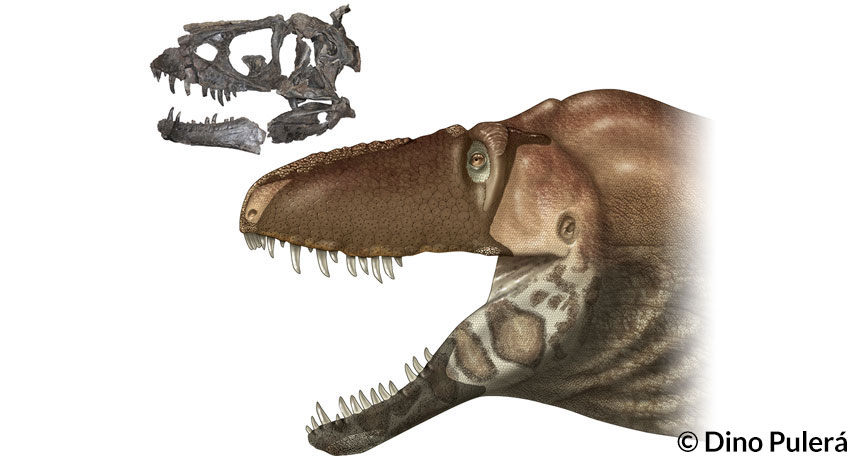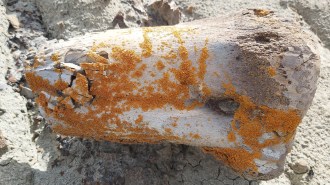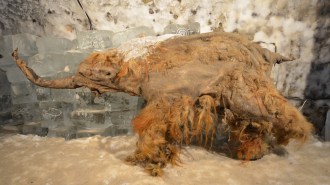New tyrannosaur had a sensitive side
Bones, hints of nerve network point to snout’s ability to sense touch, temperature

FEELIN’ FINE The coarse skull bones of the newly identified Daspletosaurus horneri (top left) hint that the tyrannosaur had sensory organs in its skin, seen as black dots on the snout scales in this illustration.
Courtesy of © Dino Pulerà.







